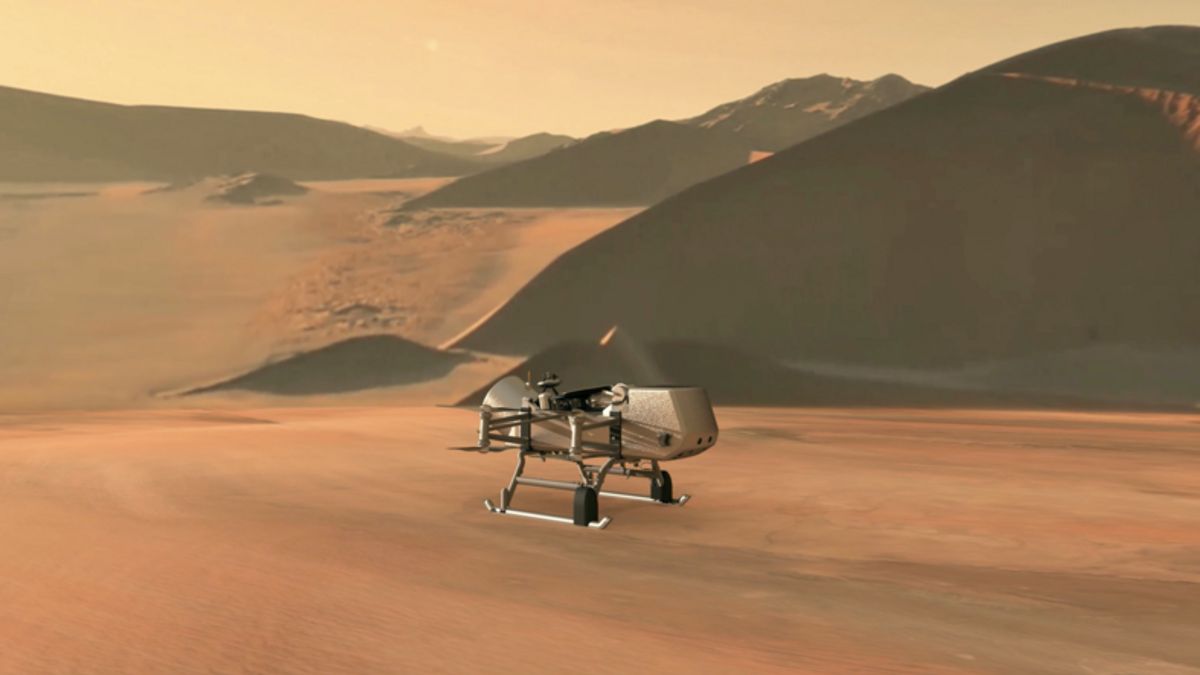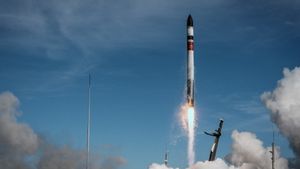
JAKARTA - NASA will again plan a space mission. This time the target is the Moon giant Saturn, Titan, which is planned to launch in 2027.
The mission, dubbed Dragonfly, will carry an instrument called the Dragonfly Mass Spectrometer (DraMS), designed to help scientists hone the chemistry they work on Titan.
It can also explain the types of chemical steps that occur on Earth, ultimately leading to the formation of life, called prebiotic chemistry.
Upon arrival in the mid-2030s, he will embark on a journey of discovery that could provide a new understanding of the development of life in the universe. Dragonfly is the fourth mission in NASA's New Frontiers program.
Titan's abundant carbon-rich chemistry, interior oceans, and the presence of liquid water in the past on Titan's surface make it ideal goal to study prebiotic chemical processes and the potential for extra-terrestrial environmental habitability.
Drams will allow scientists to return to Earth to study Titanian surface chemical arrays remotely.
We want to know if the essential type of chemical for the early pre-biochemical system on Earth occurred on Titan,' explained NASA's Goddard Space Aviation Center scientist Greenbelt, Maryland, Dr. Melissa Trainer, quoted from NASA's official website, Tuesday, March 21.
Trainer leads the Drams instrument, which will scan through measurements of samples from Titan's surface material for prebiotic chemical evidence.
To achieve this, the Dragonfly rotorcraft robot will take advantage of Titan's low gravity and dense atmosphere to fly among various points of attention on Titan's surface, which is several miles apart.
This allows Dragonfly to move its entire array of instruments to a new site when the previous site has been fully explored, and provides access to samples in an environment with a variety of geological histories.
At each location, less than one gram of samples will be drilled off the surface by the Drill for Acquisition of Complex Organics (DRACO) and taken into the main body of the lander, to a place called the attic that houses the Drams instrument.
There, they will be probed by an onboard laser or deposited in the oven to be measured by Drams. The mass spectrometer is an instrument that analyzes various chemical components of the sample by separating these components into its base molecule and forwarding them through sensors for identification.
"Drams is designed to look at organic molecules that may exist in Titan, at its composition and distribution in different surface environments," the Trainer said.
Organic molecules contain carbon and are used by all known forms of life. They are interested in understanding the formation of life because it can be created by living and not living processes.
The mass spectrometer determines what is in the sample by ionizing the material (that is, bombarding it with energy so that the atoms inside become positively or negatively charged) and checking the chemical composition of various compounds.
Involving the determination of the relationship between the weight of the molecule and its cargo, which serves as signature for the compound.
Drams was partially developed by the same team in Goddard which developed a series of Sample Analysis at Mars (SAM) instruments aboard the Curiosity cruiser.
"This design gives us very flexible instruments, which can adapt to different types of surface samples," said the Trainer.
So far, Drams and other science instruments on Dragonfly are being designed and built under the direction of Johns Hopkins' Applied Physics Laboratory intensifies, Maryland, which manages NASA's missions and design and builds rotorcraft landers.
The English, Chinese, Japanese, Arabic, and French versions are automatically generated by the AI. So there may still be inaccuracies in translating, please always see Indonesian as our main language. (system supported by DigitalSiber.id)












